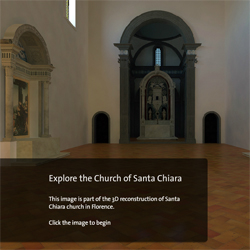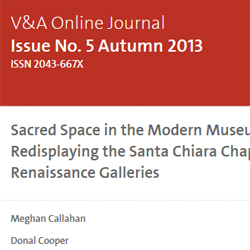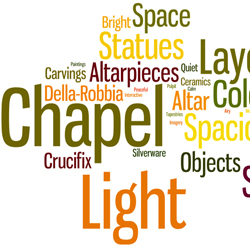The Santa Chiara Chapel: Sacred Space in the Modern Museum
The Santa Chiara Chapel was once one of Florence's best preserved Renaissance churches. However, the purchase of the high altar by the V&A Museum in 1861 removed the altar from its physical context. It was not until 2009 when, thanks to the research of Donal Cooper, the altar was re-contextualised in its original physical context. Through detailed study of the remaining chapel building in Florence, Cooper was able to re-create the chapel's interior in the V&A's Medieval and Renaissance Gallery, advancing the work of the gallery's curators and enhancing the visitor experience for all those who came to the museum.
The Santa Chiara chapel in the Victoria and Albert Museum has a unique history, split between Florence and London. The chapel was built in the 1490s at the height of the Florentine Renaissance, in the very years the firebrand preacher Girolamo Savonarola was urging religious reform upon the city. In 1860-61 it was purchased by the nascent V&A, dismantled and shipped to London to form an architectural centrepiece for the museum’s new galleries.
The Santa Chiara project saw Donal Cooper of Warwick’s History of Art Department collaborate with curators at the V&A to understand the chapel’s chequered past as both a religious shrine and museum object. Their research informed the once-in-a-generation chance to revise the chapel’s display in the museum’s new Medieval and Renaissance Galleries accompanied by a virtual reconstruction of the chapel as it would have appeared in the Renaissance. Since the opening of the galleries in 2009 Warwick has continued to work with the V&A to evaluate the public response to the new installation.
|
(unavailable 2017)
|

 - Explore Santa C
- Explore Santa C
